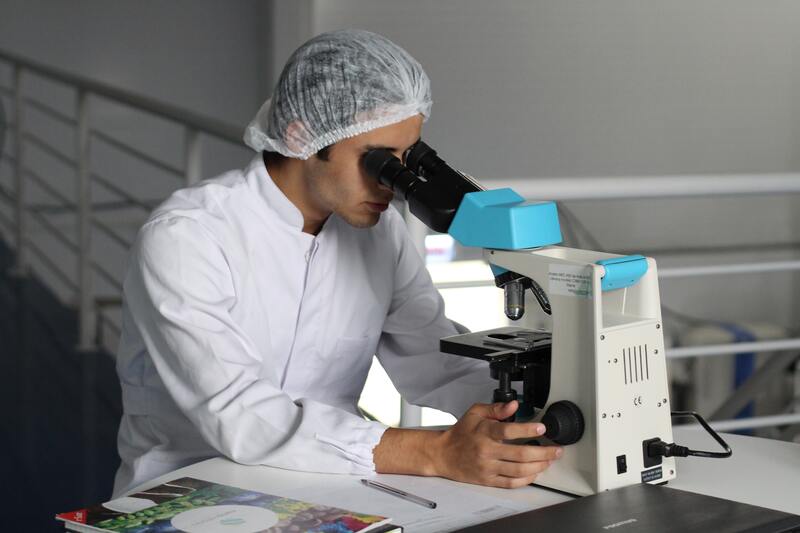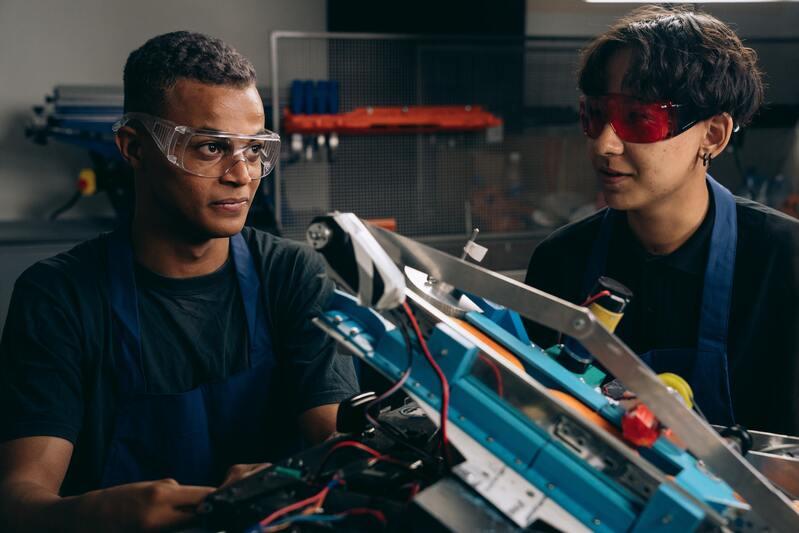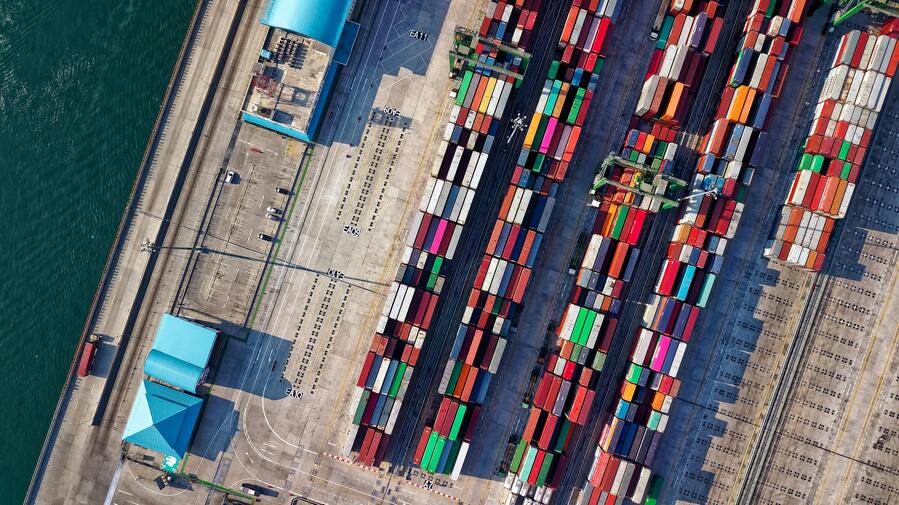We are going to see what industrial automation, robotic automation or automation in the business world consists of, what advantages it has and to know clear examples of how automation can be an important competitive advantage or even a total revolution in your business.
What is industrial automation?
Industrial automation is the phenomenon whereby machines, computers and technology transform manual processes into automated ones.
Moreover, 21st-century automation provides artificial intelligence and total interconnection for the complete autonomy of industrial processes. All this is thanks to the IoT (Internet of Things) and the IoB (Internet of Behaviour).
Advantages of industrial automation
Industrial automation processes have the following general advantages:
- Increase productivity.
- Reduce costs
- Improve quality
- Bring competitive advantages
- Increased job satisfaction. As it reduces the stress of workers and frees them from heavy and mechanical tasks.
- Better use of the human potential for more creative and specific tasks.
Automation and Robotisation in the Automotive Industry
This is one of the clearest examples of industrial automation. It is one of the sectors in which automation was first chosen.
Cars are manufactured on production lines using programmable robots. These robots shape the chassis, engines and other components. This automation enables series production with high productivity and near-perfect precision.
The Pharmaceutical Industry and its automation
pharmaceutical distribution is an industry where industrial automation is essential for large-scale operation.
Processes such as encapsulation, blistering and packaging are carried out on a large scale. This allows for a significant reduction in failures, lower prices and reduced costs.

Industrial automation in mining
Mining has also benefited from automated industrial processes.
Today, the hard work of mining in some modern companies is assisted by robotic exploration and excavation vehicles. These significantly reduce the risks to which workers are always exposed.
This is a high-risk sector as moving tons of rock with giant machines requires meticulous precision, because any error during execution can have serious consequences. In addition, the work involves working with deposits of hazardous materials or in very complicated situations.
In the mining industry, reliability and process control are therefore essential for safe operations.
One advantage of implementing automated systems is that they will allow multiple devices to run at the same time and control machinery remotely. Thanks to stable, high-performance wireless connectivity in mines, processes can be combined and performance and safety can be improved.
Another clear advantage of using robotic vehicles and automation is the reduced risk of handling explosives. These are used for the extraction of some materials and automation reduces risks and optimises their use.

Agricultural industrial automation
This is a sector where the human factor was fundamental decades ago. Today, processes have been automated thanks to modern machinery and the introduction of new technologies. For example, the introduction of artificial intelligence to help detect the best time for harvesting.
The introduction of specialised machinery results in an optimisation of the harvesting process, as well as greater efficiency in pest control. other advantages for the sector:
- Increased yields
- Increased production efficiency
- Reduced environmental impact of fertilisers and pesticides.
IT automation of a company
In most cases, the aim is to automate highly repetitive, data-intensive jobs, which are suitable for automation using IT platforms.
- Automatic stock replenishment.
- Ordering using a more controlled forecast.
- Absolute control of the results of commercial activities.
- Automation of business operations.
- Employee holiday and leave requests
- Employee analysis and retention
- Recruitment process
- Claims processing. Insurance agencies use automation to manage and process a massive number of claims.
We tell you all about the insurtech trends that are changing the sector.

In general, there is a tendency in the industry to automate repetitive and mechanical processes such as, for example:
- Assembly lines with machinery for assembling parts, fixing, screwing and welding.
- Addition of components progressively in the assigned proportions.
- Packaging and packing. With technologies capable of handling different types of packaging and labelling materials including
- Recycling plastics using hyperspectral measurement techniques to detect their different types.
- Palletising and depalletising. Using mobile machines that move around the warehouse sorting and labelling.
- Detection of foreign bodies. Using sensors such as metal detectors or X-ray systems. This makes it possible to guarantee the quality and safety of the products before they are consumed.
Business Automation in Marketing
In marketing, automation is the process of using technology to simplify and automate campaigns. Whether it’s email campaigns, social media, mobile and online advertising, and many other channels. By automating repetitive tasks, it frees up time and allows time to be spent on other tasks.
For example, by tracking and analysing the behaviour of visitors to a website. Marketing automation software enables teams to create personalised interactions across all channels. Delivering a consistent and connected customer experience.
Marketing automation makes it easy to convert potential customers into satisfied customers.
Automation helps send truly useful messages to customers, improving brand image and customer satisfaction.
In addition, the company can insist on those customers who are more likely to buy.
Advantages of marketing automation:
- More time for creative strategies and actions.
- Better understanding of customer behaviour, personalise marketing campaigns and actions more broadly
- Prioritise potential buyers
- More accurate prediction of future campaigns and actions
Digital twins, an example of industrial automation
It is a clear example of industrial automation using new technologies such as Artificial Intelligence, Machine Learning or Cloud Computing.
In its simplest form, a digital twin is a virtual replica of a physical product, process or system.
Digital twins act as a bridge between the physical and digital worlds by using sensors to collect real-time data about a physical item.
This data is then used to create a digital duplicate of the object, allowing it to be understood, analysed, manipulated and optimised.
In this article, we discuss digital twins in depth.
A data lake is a very useful element for automation. A cost-effective and scalable solution is a data lake in-a-box.

Building automation
Building automation is becoming increasingly standard in commercial buildings and is gradually making its way into homes.
It consists of interconnecting elements such as heating, lighting, air conditioning, cooling, roller shutter installation, as well as door and window technology.
The components can be centrally controlled as required using intelligent building management systems.
The aim is to respond to the needs of users or residents during their stay in the building. Once the user leaves the building, he or she can also reduce dispensable energy consumption and block accesses.
In addition, the EU regulation has become a driver for the shift towards much more efficient and environmentally friendly buildings.
Building automation helps the air quality inside buildings. Intelligent window systems, together with ventilation and management systems, help to keep the air in the best conditions.
These systems are not only used in public buildings, businesses or industries but are increasingly being developed for homes. Smart Homes are homes where power supply and consumption controls are networked with household devices and lighting systems.
As in all other buildings, in homes, it means greater efficiency, air quality, improved comfort, safety and relieves users of routine tasks.
Industrial data automation
Data automation is the process of obtaining, handling and processing data through automated tools.
This process typically has three phases
- Obtaining data from one or more sources
- Transforming into the format required by the target system
- Load into the target system, such as a database, data warehouse or data lake.
Advantages of data automation:
- Optimise time. One of the main benefits of automation is that it helps business users focus on analysing data rather than collecting it.
- Performance and productivity. Automation ensures the quality of the data and its loading into the system. This aids analysis.
- Integration. Automation enables the unification of data from different sources, making it easier to store and analyse.

What data should be automated?
As a general rule, data sets that need frequent updates, transformations or manipulations, and are of significant size, should be automated.
Industrial automation with Blockchain
The blockchain enables the decentralisation of information. Automation using this decentralisation of information is focusing on two areas: traceability control and the production chain.
Controlling the traceability of products without errors has been a major goal in the food industry.
With blockchain and distributed data storage, the communication of information between the different nodes is simplified and, at the same time, the falsification of records is made more difficult.
Much more complete and reliable control of the production chain is obtained. Also, aggregating data provided by IoT devices
Another application of blockchain is smart contracts. These are smart contracts programmed to be executed without external intervention when certain conditions are met.
This allows machines greater autonomy and they will be able to negotiate among themselves the best solutions for the production process.
This will, for example, make it possible to authorise payments, fill orders, warn in the event of a breakdown or activate production when certain conditions are met and without the need for human involvement.
Device-to-device communication standards to ensure automation
A standard for machine-to-machine communication is essential for the advancement of the industry.
Time-Sensitive Networking (TSN) is a set of Ethernet standards developed by the IEEE (Institute of Electrical and Electronics Engineers). This standard enables open, real-time communication between different devices with low latency.
The standards remove barriers in IoT connections and ensure secure information exchange.
Machine learning
Industrial automation will make total sense with the implementation of machine learning.
With the implementation of IoT in the industry, the perfect scenario will be created for the implementation of big data.
The volume of data collected will allow machines to identify patterns, draw their own conclusions and act on their own.
Machines will then be able to anticipate peaks in demand, stock-outs, breakdowns or other inefficiencies, and take action to deal with these situations in the best possible way.
The machines will have much more information than the employer or the technicians themselves, so their decisions will almost certainly be the most appropriate.

Practical examples of industrial automation
Toyota
The Toyota Company together with one of its suppliers was able to change the operation of one of its customers.
Thanks to automation, it has been possible to link two different companies 100 metres apart. By building a fully automated walkway and using AGV (Automatic Guided Vehicle) technology to supply the production lines with raw materials.
It also has WMS software that automates the entire management of warehouse orders. In addition, surplus material is returned.
The logistics system implemented, based on automation and robotisation at the highest level, has significantly improved the conditions of the employees, who have seen how their basically manual tasks have been transformed into much more interesting functions: control and programming of the system, inventory and stock management, etc.
Transporte de forma segura de mercancías por todo el mundo con Microsoft Azure e IoT
Maersk is an internationally known freight forwarder. By integrating Microsoft Azure and IoT devices, it can track and monitor 380,000 refrigerated containers as they move around the globe.
This ensures that customers always know where their shipments are. In addition, the atmospheric parameters of the containers can be adjusted so that food and medicines are in perfect condition when they arrive on the other side of the world.
This is an example of the incredible capabilities of Microsoft Azure technology, here we tell you how OpensSitemas integrates this technology for each customer’s needs.

Automatic maize grading
In this case, it was a food industry plant that used to sort maize manually.
This resulted in errors and lower quality than today.
By implementing sensors, screens, channels and meters, an automatic corn grading control system was installed.
You can read more about this automation case on the case website.
Automation of the entire drug manufacturing process, Centrient Pharmaceuticals
Irrigation systems in parks and gardens in the North of the City of Madrid
Park and garden irrigation systems have valves, pipes, sprinklers and spray heads that require continuous maintenance and servicing.
These reviews were carried out in the traditional way using databases such as Excel, paper documentation and other classic systems.
In this case, automation consisted of the creation of a Cloud system, a Mobile App and automatic systems for sending information.
In this way, it has been achieved that workers have all the automated information about the revisions and incidents that they have to solve.
Additionally, all the information is integrated into a platform created by the Madrid City Council to centralise information called Madrid Inteligente (Intelligent Madrid).
Among the advantages that have been achieved:
- Optimising work and reducing costs
- Higher quality data
- Shorter working hours, shorter commuting times and greater convenience for employees.
You can find all the information on this automation case here.
Intelligent data mining based on complex databases
Blue Prism has evolved its document processing AI technology by introducing Decipher. It is a machine learning-based approach to intelligent document processing that classifies and extracts text and structure from complex databases.
It is intuitive and easy to use, capable of extracting data from complex documents such as bank loan applications, invoices or expense reports.
This solution is already being tested as a solution to automate invoice management as part of the purchasing process.
Increased customer satisfaction and integration between office and field staff.
You can find all the information on this Microsoft project at the following link
Industrial automation process
Although there are very different business sectors, automation is generally a more homogeneous process than it might seem.
The process follows fairly similar phases of automation.
How does Open Sistemas work in its industrial automation processes? Phases
Database design and creation
First of all, it is essential to centralise the information, to bring together and unify all the data. This is where the information is received from all the sensors and systems that are installed.
It is essential to digitalise all processes to have as much information as possible.
At this stage, compatible information systems are also created and the data is enriched. The use of a data lake, such as Azure, is very useful.
During this process, AI and machine learning are also used to extract information from the data. Important information can be extracted from raw data that has no relevance.
For example, a database is created where all the information of a train operator is received: the position of the trains, all the traffic information or the number of passengers.
Visualisation applications
Once the information has been digitised, applications are created to visualise the data, automate business processes or obtain KPIs.
With these applications, it is possible to visualise the information in a way that is accessible to everyone and allows conclusions to be drawn.
Continuing with the previous example, visual applications are created to locate trains, see the status of the train or if alarms or incident warnings are triggered.

Process automation
Once all the information is available, the automation possibilities are analysed and evaluated.
Based on the data and previous experience, the automation solution is implemented. This can vary completely depending on the objectives and the sector for which you are working.
In the example of trains, it is possible to automate many processes. For example, sending warning messages when the train is arriving at the station or stopping the train in case of an emergency.
Control systems
Throughout the entire process, control protocols are established to ensure that all information is arriving correctly.
In this way, errors are avoided and the reliability of the information is guaranteed.
The control systems themselves are already an automation solution. By alerting us that certain information is not arriving, we are already automatically detecting a problem.
As we have seen, automation is a fundamental process for the competitiveness of companies in the 21st century. The advantages it brings are far greater than the cost of its implementation and represent a clear competitive advantage over the competition. It is therefore important to start the processes as early as possible.
Automation processes are feasible in almost any industry and most processes can be optimised to improve production systems. All that is needed is an experienced and capable project team.









